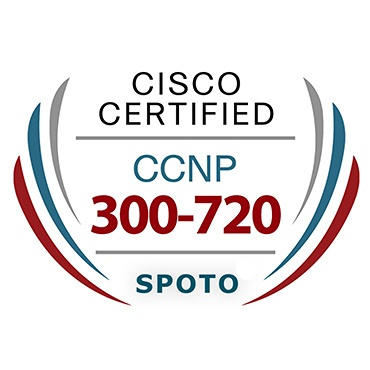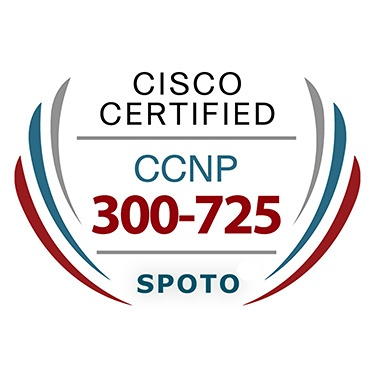Security
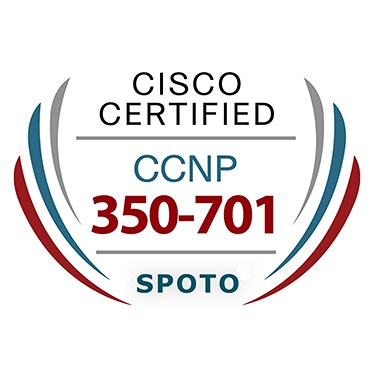
Top CCNP 350-701 SCOR Exam Questions for Guaranteed Success in 2023
Candidates who pass the CCNP Security 350-701SCOR exam are able to design and manage security technologies, including network security, cloud security, and content security. The 350-701 SCOR exam is a great way to stand out from the rest and earn higher salaries. This exam is a great choice if you want to climb the career ladder. We have prepared a detailed study guide for the CCNP Security exam. Prepare to get all the necessary details and the highly recommended resource for your preparation. 350-701 SCOR Exam Goals This exam measures the candidate's ability to implement and operate core security technologies. First, network security Secondly, Cloud security Security of content Also, endpoint protection and detection Secure network access is also available Additionally, enforcement and visibility Target Audience: 350-701 SCOR This exam is for Network engineers, Security Engineers, and Network designers. Additionally, the Network administrator, the Systems engineer, and the Consulting system engineer. This exam is also suitable for Network manager, Technical solutions architect, and CISCO integrators, as well as partners. 350-701 SCOR Exam Prerequisites This exam does not require any prerequisites. It would be beneficial if candidates had the following knowledge: Begin by becoming familiar with Ethernet and TCP/IP networking Next, you will need to have a working knowledge of Windows operating system Additional information: Working knowledge of Cisco IOS concepts and networking Also, familiarity with basic concepts of security in networking Guide for CCNP Security 350-701 SCOR Passing the exam is possible if you have the right resources. Be sure that the content is reliable and accurate. The resources you use will determine how well you prepare for and how successful you are at passing the exam. You should exercise caution when choosing preparatory materials. SPOTO materials are highly recommended. The Course Outline and Review All Exam Objectives This exam covers the following areas: Domain 1 Security Concepts (25%) This domain is first focused on explaining common threats to on-premises environments and cloud environments. Next, we will compare common security flaws such as software bugs and weak or hardcoded passwords. SQL injection, missing encryption buffer overflow path traversal, cross-site scripting/forgery. Additionally, the functions of cryptography components like hashing, encryption and PKI for IPsec, SSL, NAT-T IPv4 IPsec, preshared key, certificate-based authorization, and SSL are described. Comparing site-to-site VPN and remote VPN deployment types, such as sVTI and IPsec, Crypto map and DMVPN, FLEXVPN including high availability considerations and AnyConnect. Also, describe security intelligence sharing, authoring, consumption, and consumption, as well as explain the role of endpoints in protecting people from phishing attacks and other social engineering attacks. Finally, we will explain the North Bound and South Bound APIs within the SDN architecture. Next, we will explain DNAC APIs that are used for network provisioning and optimization, monitoring, troubleshooting, and troubleshooting. Finally, we will be interpreting the basic Python scripts that call Cisco Security appliance APIs. Domain 2 - Network Security (20%) The second domain focuses on comparing network security solutions that offer intrusion prevention and firewall capabilities. Describes deployment models for network security solutions and architectures that provide firewall capabilities. Next, describe the components, capabilities and benefits of NetFlow Records and Flexible NetFlow records. Configuring and validating network security methods. Implementing segmentation, access control and URL filtering policies as well as malware protection. Implementing management options to network security solutions like intrusion prevention or perimeter security. Configuring AAA is also necessary for secure network management and perimeter security. Configuring remote access VPN and site-to-site VPN. Domain 3 - Securing the Cloud (30%) This domain also includes the identification of security solutions for cloud environments. Next, we will compare the provider and customer security responsibility for different cloud service models. DevSecOps is also described (CI/CD pipeline and container orchestration) and security. Additionally, you can implement application and data security within cloud environments. Additionally, you will need to identify security capabilities and deployment models as well as policy management in order to secure the cloud. Configuring cloud monitoring and logging methods, and describing security concepts for workloads and applications are all part of the final step. Domain 4 - Content Security (15%) This domain describes traffic redirection, capture methods, web proxy identity and authentication that includes transparent user identification. Next, compare the components, capabilities, and benefits of cloud-based and local email and web solutions. Configuring and verifying web and email security deployment methods for protecting on-premises users and remote users. Config and verify security features for email, such as SPAM filtering and anti-malware filtering. DLP, blacklisting, and email encryption. Configuring and verifying secure internet gateways and security features like blacklisting URL filtering URL scanning malware categorization web application filtering and TLS encryption. Description of the components, capabilities, as well as benefits of Cisco Umbrella. Configuring and verifying web security controls for Cisco Umbrella (identities and URL content settings, destination list, reporting, and reporting). Domain 5 - Endpoint Protection and Detection (15%) This domain also includes Endpoint Protection Platforms and Endpoint Detection & Response solutions. Antimalware, retro security, Indication of Compromise, IOC, antivirus, dynamic files analysis, and endpoint-sourced Telemetry. Configuring and verifying outbreak control and quarantines in order to prevent infection. Next, we will discuss the justifications of endpoint-based security as well as the value of asset management such as MDM and endpoint device management. Furthermore, we will discuss the importance and uses of multifactor authentication (MFA). Additionally, we will describe endpoint security solutions and explain the importance of an endpoint patching strategy. Domain 6 Secure Network Access, Visibility and Enforcement (15%) This domain also focuses on identity management and secure network access concepts like guest services, profiling, and posture assessment. Next, configure and verify network access devices functionality, such as 802.1X or MAB, WebAuth. Describe network access with CoA, the benefits of device compliance, and application control. Explanation of exfiltration techniques and description of the benefits and capabilities of network telemetry.

Top CCNP 350-701 SCOR Exam Questions for Guaranteed Success in 2023
Candidates who pass the CCNP Security 350-701SCOR exam are able to design and manage security technologies, including network security, cloud security, and content security. The 350-701 SCOR exam is a great way to stand out from the rest and earn higher salaries. This exam is a great choice if you want to climb the career ladder. We have prepared a detailed study guide for the CCNP Security exam. Prepare to get all the necessary details and the highly recommended resource for your preparation. 350-701 SCOR Exam Goals This exam measures the candidate's ability to implement and operate core security technologies. First, network security Secondly, Cloud security Security of content Also, endpoint protection and detection Secure network access is also available Additionally, enforcement and visibility Target Audience: 350-701 SCOR This exam is for Network engineers, Security Engineers, and Network designers. Additionally, the Network administrator, the Systems engineer, and the Consulting system engineer. This exam is also suitable for Network manager, Technical solutions architect, and CISCO integrators, as well as partners. 350-701 SCOR Exam Prerequisites This exam does not require any prerequisites. It would be beneficial if candidates had the following knowledge: Begin by becoming familiar with Ethernet and TCP/IP networking Next, you will need to have a working knowledge of Windows operating system Additional information: Working knowledge of Cisco IOS concepts and networking Also, familiarity with basic concepts of security in networking Guide for CCNP Security 350-701 SCOR Passing the exam is possible if you have the right resources. Be sure that the content is reliable and accurate. The resources you use will determine how well you prepare for and how successful you are at passing the exam. You should exercise caution when choosing preparatory materials. SPOTO materials are highly recommended. The Course Outline and Review All Exam Objectives This exam covers the following areas: Domain 1 Security Concepts (25%) This domain is first focused on explaining common threats to on-premises environments and cloud environments. Next, we will compare common security flaws such as software bugs and weak or hardcoded passwords. SQL injection, missing encryption buffer overflow path traversal, cross-site scripting/forgery. Additionally, the functions of cryptography components like hashing, encryption and PKI for IPsec, SSL, NAT-T IPv4 IPsec, preshared key, certificate-based authorization, and SSL are described. Comparing site-to-site VPN and remote VPN deployment types, such as sVTI and IPsec, Crypto map and DMVPN, FLEXVPN including high availability considerations and AnyConnect. Also, describe security intelligence sharing, authoring, consumption, and consumption, as well as explain the role of endpoints in protecting people from phishing attacks and other social engineering attacks. Finally, we will explain the North Bound and South Bound APIs within the SDN architecture. Next, we will explain DNAC APIs that are used for network provisioning and optimization, monitoring, troubleshooting, and troubleshooting. Finally, we will be interpreting the basic Python scripts that call Cisco Security appliance APIs. Domain 2 - Network Security (20%) The second domain focuses on comparing network security solutions that offer intrusion prevention and firewall capabilities. Describes deployment models for network security solutions and architectures that provide firewall capabilities. Next, describe the components, capabilities and benefits of NetFlow Records and Flexible NetFlow records. Configuring and validating network security methods. Implementing segmentation, access control and URL filtering policies as well as malware protection. Implementing management options to network security solutions like intrusion prevention or perimeter security. Configuring AAA is also necessary for secure network management and perimeter security. Configuring remote access VPN and site-to-site VPN. Domain 3 - Securing the Cloud (30%) This domain also includes the identification of security solutions for cloud environments. Next, we will compare the provider and customer security responsibility for different cloud service models. DevSecOps is also described (CI/CD pipeline and container orchestration) and security. Additionally, you can implement application and data security within cloud environments. Additionally, you will need to identify security capabilities and deployment models as well as policy management in order to secure the cloud. Configuring cloud monitoring and logging methods, and describing security concepts for workloads and applications are all part of the final step. Domain 4 - Content Security (15%) This domain describes traffic redirection, capture methods, web proxy identity and authentication that includes transparent user identification. Next, compare the components, capabilities, and benefits of cloud-based and local email and web solutions. Configuring and verifying web and email security deployment methods for protecting on-premises users and remote users. Config and verify security features for email, such as SPAM filtering and anti-malware filtering. DLP, blacklisting, and email encryption. Configuring and verifying secure internet gateways and security features like blacklisting URL filtering URL scanning malware categorization web application filtering and TLS encryption. Description of the components, capabilities, as well as benefits of Cisco Umbrella. Configuring and verifying web security controls for Cisco Umbrella (identities and URL content settings, destination list, reporting, and reporting). Domain 5 - Endpoint Protection and Detection (15%) This domain also includes Endpoint Protection Platforms and Endpoint Detection & Response solutions. Antimalware, retro security, Indication of Compromise, IOC, antivirus, dynamic files analysis, and endpoint-sourced Telemetry. Configuring and verifying outbreak control and quarantines in order to prevent infection. Next, we will discuss the justifications of endpoint-based security as well as the value of asset management such as MDM and endpoint device management. Furthermore, we will discuss the importance and uses of multifactor authentication (MFA). Additionally, we will describe endpoint security solutions and explain the importance of an endpoint patching strategy. Domain 6 Secure Network Access, Visibility and Enforcement (15%) This domain also focuses on identity management and secure network access concepts like guest services, profiling, and posture assessment. Next, configure and verify network access devices functionality, such as 802.1X or MAB, WebAuth. Describe network access with CoA, the benefits of device compliance, and application control. Explanation of exfiltration techniques and description of the benefits and capabilities of network telemetry.
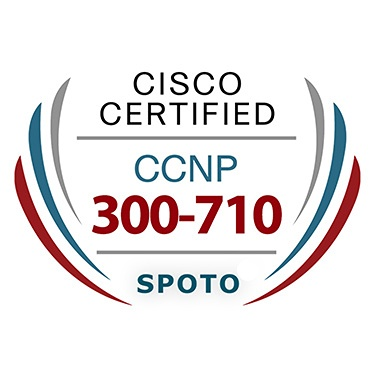
Top CCNP 300-710 SNCF Exam Questions for Guaranteed Success in 2023
The CCNP Security (300-710 SPNC) exam measures your knowledge of policies, deployments, management, and troubleshooting about Cisco Firepower(r), Threat Defense and Firepower(r), 7000 and Firepower(r), 8000 Series virtual appliances. The main purpose of the exam is to teach you about Next-Generation Firewalls and Next-Generation Intrusion Prevention System capabilities like file type identification, network-based Malware detection, and deep packet inspection. Candidates with the following profiles are eligible to take this exam: Security professionals Security consultants Administrators of the network System engineers Support personnel for technical issues Resellers and channel partners Cisco partners and integrators Exam Prerequisites No formal prerequisites are required. There are a few areas where knowledge is an advantage: TCP/IP networking technical understanding and network architecture Basic knowledge of Intrusion Detection Systems, (IDS), and IPS. Basic routing protocols and TCP/IP knowledge Familiarity and familiarity with Intrusion Prevention Systems (IPS), VPN, and firewall concepts Exam Details It costs $300 and is coded 300-710 SNCF. The exam takes 90 minutes. Multiple-choice questions are available. The certification is valid for 3 years. Both English and Japanese are accepted for the test. Cisco CCNP Security (300-710 SNCF Exam) covers the following topics: 1. Deployment: 30% 1.1 Implement NGFW mode ( Cisco Documentation Transparent, Routed Firewall Mode). Routed mode Transparent mode 1.2 Implement NGIPS modes (Cisco Documentation: Next-Generation Intrusion Prevention System (NGIPS)) Passive Inline 1.3 Implement high availability options. Cisco Documentation Configuring High Availability Link redundancy Standby/active failover Multi-instance 1.4 Describe IRB configurations ( Cisco Documentation Configuring IRB 2. Configuration: 30% 2.1 Configure system configurations in Cisco Firepower Management Center ( Cisco Documentation Firepower Management Center Configuration Manual). 2.2 Configure the following policies in Cisco Firepower Management Center ( Cisco Documentation Getting Started with Firepower). Control of access Intrusion Malware and file DNS Identity SSL Prefilter 2.3 Configure the following features with Cisco Firepower Management Center ( Cisco documentation: Cisco Firepower Management Center). Network discovery Application detectors (Open AppID) Correlation Take Action 2.4 Configure objects with Firepower Management Center ( Cisco Documentation Navigating Cisco Firepower Documentation Object Management Intrusion Rules 2.5 Configure devices using Firepower Management Center (Cisco Documentation: Firepower) Device Management NAT VPN QoS Setting up a platform Certificates 3. Troubleshooting and Management: 25% Troubleshooting FMC CLI/GUI ( Cisco Documentation Cisco UCS Manager GUI Configuration guide FMC Documentation: Working With Reports - Configure Dashboards and Reporting Troubleshooting using packet capture procedures ( Cisco documentation: Packet Capture Procedures on Cisco Firepower device). Analyze risk and standard reporting ( Cisco Documentation Reports). 4. Integration: 15% Configure Cisco AMP for Networks in Firepower Management Center ( Cisco Documentation Cisco AMP for Networks). Firepower Management Center Configure Cisco AMP For Endpoints ( Cisco Documentation AMP For Endpoints User Guide Third-party security intelligence feeds can be implemented by the Implement Threat Intelligence Director ( Cisco Documentation Cisco Threat Director (TID). Describe Cisco Threat Response to security investigations ( Cisco Documentation Cisco Threat Respond). Cisco FMC PxGrid Integration With Cisco Identify Services Engine (ISE). ( Cisco Documentation Configure ISE 2.4 & FMC 6.2.3 pxGrid Integr Rapid Threat Containment (RTC), functionality in Firepower Management Center ( Cisco Documentation Cisco Rapid Threat Containment). Practice Exams You should practice what you have learned to be able to analyze your practice. By practicing, you can improve your answering skills which will save you a lot of time. Also, practice tests can be started after you have completed a topic. This will serve as a revision section

Top CCNP 300-710 SNCF Exam Questions for Guaranteed Success in 2023
The CCNP Security (300-710 SPNC) exam measures your knowledge of policies, deployments, management, and troubleshooting about Cisco Firepower(r), Threat Defense and Firepower(r), 7000 and Firepower(r), 8000 Series virtual appliances. The main purpose of the exam is to teach you about Next-Generation Firewalls and Next-Generation Intrusion Prevention System capabilities like file type identification, network-based Malware detection, and deep packet inspection. Candidates with the following profiles are eligible to take this exam: Security professionals Security consultants Administrators of the network System engineers Support personnel for technical issues Resellers and channel partners Cisco partners and integrators Exam Prerequisites No formal prerequisites are required. There are a few areas where knowledge is an advantage: TCP/IP networking technical understanding and network architecture Basic knowledge of Intrusion Detection Systems, (IDS), and IPS. Basic routing protocols and TCP/IP knowledge Familiarity and familiarity with Intrusion Prevention Systems (IPS), VPN, and firewall concepts Exam Details It costs $300 and is coded 300-710 SNCF. The exam takes 90 minutes. Multiple-choice questions are available. The certification is valid for 3 years. Both English and Japanese are accepted for the test. Cisco CCNP Security (300-710 SNCF Exam) covers the following topics: 1. Deployment: 30% 1.1 Implement NGFW mode ( Cisco Documentation Transparent, Routed Firewall Mode). Routed mode Transparent mode 1.2 Implement NGIPS modes (Cisco Documentation: Next-Generation Intrusion Prevention System (NGIPS)) Passive Inline 1.3 Implement high availability options. Cisco Documentation Configuring High Availability Link redundancy Standby/active failover Multi-instance 1.4 Describe IRB configurations ( Cisco Documentation Configuring IRB 2. Configuration: 30% 2.1 Configure system configurations in Cisco Firepower Management Center ( Cisco Documentation Firepower Management Center Configuration Manual). 2.2 Configure the following policies in Cisco Firepower Management Center ( Cisco Documentation Getting Started with Firepower). Control of access Intrusion Malware and file DNS Identity SSL Prefilter 2.3 Configure the following features with Cisco Firepower Management Center ( Cisco documentation: Cisco Firepower Management Center). Network discovery Application detectors (Open AppID) Correlation Take Action 2.4 Configure objects with Firepower Management Center ( Cisco Documentation Navigating Cisco Firepower Documentation Object Management Intrusion Rules 2.5 Configure devices using Firepower Management Center (Cisco Documentation: Firepower) Device Management NAT VPN QoS Setting up a platform Certificates 3. Troubleshooting and Management: 25% Troubleshooting FMC CLI/GUI ( Cisco Documentation Cisco UCS Manager GUI Configuration guide FMC Documentation: Working With Reports - Configure Dashboards and Reporting Troubleshooting using packet capture procedures ( Cisco documentation: Packet Capture Procedures on Cisco Firepower device). Analyze risk and standard reporting ( Cisco Documentation Reports). 4. Integration: 15% Configure Cisco AMP for Networks in Firepower Management Center ( Cisco Documentation Cisco AMP for Networks). Firepower Management Center Configure Cisco AMP For Endpoints ( Cisco Documentation AMP For Endpoints User Guide Third-party security intelligence feeds can be implemented by the Implement Threat Intelligence Director ( Cisco Documentation Cisco Threat Director (TID). Describe Cisco Threat Response to security investigations ( Cisco Documentation Cisco Threat Respond). Cisco FMC PxGrid Integration With Cisco Identify Services Engine (ISE). ( Cisco Documentation Configure ISE 2.4 & FMC 6.2.3 pxGrid Integr Rapid Threat Containment (RTC), functionality in Firepower Management Center ( Cisco Documentation Cisco Rapid Threat Containment). Practice Exams You should practice what you have learned to be able to analyze your practice. By practicing, you can improve your answering skills which will save you a lot of time. Also, practice tests can be started after you have completed a topic. This will serve as a revision section
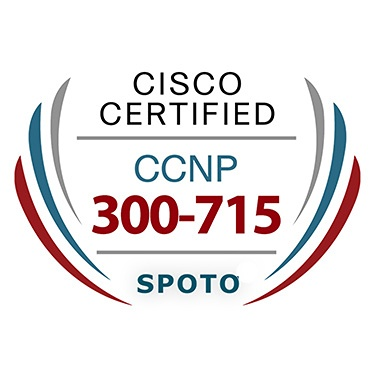
Top CCNP 300-715 SISE Exam Questions for Guaranteed Success in 2023
The SISE 300-715 Configuring and Implementing Cisco Identity Services Engine exam is a 90-minute exam that covers the CCNP Security certifications and Cisco Certified Specialist Security Identity Management Implementation certifications. The Cisco Identity Services Engine 300-715 exam is designed to test a candidate's knowledge. These areas include policy enforcement, architecture and deployment, Web Auth, guest services, profiler, and BYOD as well as network access device management. Who are the Target Audiences for the 300-715 Exam Exam? Network security engineers Administrators of ISE Engineers for wireless network security Cisco partners and integrators A candidate who passes the 300-715 Certificate exam should be able: Define Cisco ISE deployments. They will be able to describe how they interact to create an integrated security architecture. Discuss the benefits of such deployments and how each Cisco IISE capability contributes. Describe concepts and configure components for 802.1X and MAC Authentication Bypass, (MAB), authentication, identity management, and certificate services. Candidates would be asked to explain how Cisco ISE policy sets are used to enable authorization and authentication, and how they can help their company meet its needs. Define third-party Network Access Devices, (NADs), Cisco TrustSec, or Easy Connect. Configure and describe web authentication processes, operations, and guest services. This includes guest access components and different guest access scenarios. Summary of the 300-715 Examination: Candidates must work hard to answer the 55 to 65 questions. SISE exam. Although the exam is multiple-choice, candidates may encounter scenario-based questions. How to prepare for the 300-715 Exam? The Implementing Cisco Identity Services Engine v3.0 training teaches a candidate how to deploy and use the Cisco Identity Services Engine v2.4. This engine is an access control and identity platform that facilitates consistent and secure access control over wired and wireless connections. This hands-on course provides candidates with the knowledge and skills to use Cisco ISE. It includes profiling services and policy enforcement. Web authentication, guest access, BYOD, and device administration. A candidate will learn how to use Cisco ISE through expert instruction and practical practice. This will allow them to gain visibility into the network and streamline security policy management. It will also help improve operational efficiency. Don't Forget to Practice The most important part of the Cisco exam preparation is practicing. After a candidate has mastered all topics, he can begin taking online 300-715 practice tests. Exam preparation level checks are only possible if you're able to evaluate yourself. Continuous online practice helps candidates to identify their strengths and weaknesses. Practice tests increase confidence and prepare you to take the real exam. What are the benefits of the CCNP300-715 Certification? Increase Your Resume Value With the 300-715 Certificate: Network security is a major concern. The demand for certified candidates is growing as threats increase. Employers will be more likely to trust your abilities and talents in network security once you have a CCNP Security certificate like the 300-715. A CCNP Security certification requires extensive fieldwork. Having the certification on your resume proves your knowledge and skills. Excellent Job Growth: A CNP Security certificate will make your career easier. The certification will make you more qualified than non-certified candidates whether you're looking for a promotion or a job switch. Certified candidates are more likely to negotiate a better salary. CCNP Security certification 300-715 makes you qualified for high-growth positions in the future. Many Cisco certifications are required steps to obtain more advanced certifications. They also provide the additional training that is necessary for higher-level designations and certifications. With the CCNP security certificate, it is clear that this is the truth. Get the Cisco 300-715 certification to help you get ahead in your career.

Top CCNP 300-715 SISE Exam Questions for Guaranteed Success in 2023
The SISE 300-715 Configuring and Implementing Cisco Identity Services Engine exam is a 90-minute exam that covers the CCNP Security certifications and Cisco Certified Specialist Security Identity Management Implementation certifications. The Cisco Identity Services Engine 300-715 exam is designed to test a candidate's knowledge. These areas include policy enforcement, architecture and deployment, Web Auth, guest services, profiler, and BYOD as well as network access device management. Who are the Target Audiences for the 300-715 Exam Exam? Network security engineers Administrators of ISE Engineers for wireless network security Cisco partners and integrators A candidate who passes the 300-715 Certificate exam should be able: Define Cisco ISE deployments. They will be able to describe how they interact to create an integrated security architecture. Discuss the benefits of such deployments and how each Cisco IISE capability contributes. Describe concepts and configure components for 802.1X and MAC Authentication Bypass, (MAB), authentication, identity management, and certificate services. Candidates would be asked to explain how Cisco ISE policy sets are used to enable authorization and authentication, and how they can help their company meet its needs. Define third-party Network Access Devices, (NADs), Cisco TrustSec, or Easy Connect. Configure and describe web authentication processes, operations, and guest services. This includes guest access components and different guest access scenarios. Summary of the 300-715 Examination: Candidates must work hard to answer the 55 to 65 questions. SISE exam. Although the exam is multiple-choice, candidates may encounter scenario-based questions. How to prepare for the 300-715 Exam? The Implementing Cisco Identity Services Engine v3.0 training teaches a candidate how to deploy and use the Cisco Identity Services Engine v2.4. This engine is an access control and identity platform that facilitates consistent and secure access control over wired and wireless connections. This hands-on course provides candidates with the knowledge and skills to use Cisco ISE. It includes profiling services and policy enforcement. Web authentication, guest access, BYOD, and device administration. A candidate will learn how to use Cisco ISE through expert instruction and practical practice. This will allow them to gain visibility into the network and streamline security policy management. It will also help improve operational efficiency. Don't Forget to Practice The most important part of the Cisco exam preparation is practicing. After a candidate has mastered all topics, he can begin taking online 300-715 practice tests. Exam preparation level checks are only possible if you're able to evaluate yourself. Continuous online practice helps candidates to identify their strengths and weaknesses. Practice tests increase confidence and prepare you to take the real exam. What are the benefits of the CCNP300-715 Certification? Increase Your Resume Value With the 300-715 Certificate: Network security is a major concern. The demand for certified candidates is growing as threats increase. Employers will be more likely to trust your abilities and talents in network security once you have a CCNP Security certificate like the 300-715. A CCNP Security certification requires extensive fieldwork. Having the certification on your resume proves your knowledge and skills. Excellent Job Growth: A CNP Security certificate will make your career easier. The certification will make you more qualified than non-certified candidates whether you're looking for a promotion or a job switch. Certified candidates are more likely to negotiate a better salary. CCNP Security certification 300-715 makes you qualified for high-growth positions in the future. Many Cisco certifications are required steps to obtain more advanced certifications. They also provide the additional training that is necessary for higher-level designations and certifications. With the CCNP security certificate, it is clear that this is the truth. Get the Cisco 300-715 certification to help you get ahead in your career.
